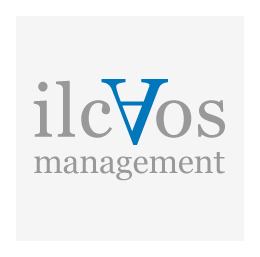Objective: documenting the client’s Return on Investment for consultancy. What is the consultancy value. Put the client in a position to measure the value of the benefits gained from consultancy.

The need to measure the value of a process of consultation is now recognized by leading consulting firms in the world for more than thirty years. This argument, in Italy, has not been recognized as viable for several reasons. There is a resistance to this approach. The objections to the concept of ROI in consulting are different: the ROI calculation is complex, consumes resources, if senior management does not require it is not necessary to propose, in the calculation of ROI consulting there are too many subjective elements, the concept of ROI is only applicable in production processes, it is not possible to take into account the influences of all the factors, it is only suitable for large customers, there are no standards. What I propose is to build a semi-standard, easy to use and based on a few objective data.
Why measure the results of the consultation
The assistance of consultants is required for the re-engineering, implementation of systems, human resource development and improvement of processes, product innovations and process, in general, with the hope of growth and performance improvement. Often customers, and in some cases the consultants, do not reach the expected results.
It would be unfair to consider all consultants as incapable of producing results or provide useful products and services. However, it is interesting, and even fun, to remember how the consultants are called in a famous book by Scott Adams:

- A consultant is a person who takes your money and undertakes, irritating your co-workers, looking at all the ways to extend the consulting contract.
- Consultants convene and manage an endless series of meetings to test various hypotheses.
- These meetings are a vital step to ensure that managers exposed problems can generate other consulting assignments.
- After determining the correct solution, it must be justified by a thorough analysis.
- The analysis must be as complex and confusing as possible, so as to discourage any contribution from the staff.
- Consultants use decision-making tools that create alternative scenarios based on different assumptions.
- Any hypothesis not congruent with the predetermined solution is considered as non economic by consultants.
- The consultants often suggest you do anything that you are not doing at the moment.
- The consultants do not require great experience: they learn fast.
- The consultants go away, and this makes them excellently guilty for the mistakes of management.
- The consultants often receive more trust than your employees.
- The consultants perform strongly because of working long hours, so as to demonstrate that the 60 hours per week of your regular staff are few.
Of course these are humorous jokes that have, however, in some cases, an element of truth. We can also add: “The consultant is the one who steals your watch and tells you what time it is.”
It should therefore be interesting, in the interest of all, that consultants and clients could start with an indication of some rules or best practices.
The goal of counseling should always be to create value for the customer, with the customer.
Consultants accepts an assignment only if:
- the client ensures his willingness and commitment to grow the value of its organization, and for this objective he is willing to invest;
- it is sure to grow the value of the client organization;
- the client can measure the growth of the value of his organization, and for that you can continuously measure the performance and can provide the customer with a tool that allows him to measure its success.
Do not say what you should do but do what you have to do, together with the client. We put together our skills and those of our customers to travel with him the path to success.
To make sure that a company, organization, continue to live in our world characterized by rapid innovation and competitiveness, we need a steady growth. And this is the expectation of shareholders and entrepreneurs.
The intervention of counseling, the performance, should always be results-oriented and counseling must be made responsible for the results.
From the point of view of the client, requests can be defined in four areas:
- see / measure concrete changes as result of the consultancy; verify that the suggestions have been implemented correctly, on schedule and with the right care.
- see / measure the influence that the process has had on the business;
- check the return on investment;
- note that there are potential tangible and / or intangible.
It seems clear then that the client requests, is in short the ROI on investment for consultancy. The process of calculating the ROI should be simple and understandable; economic, in the sense that it can be, as far as possible, standard for the consulting firm; assumptions, methodology and techniques must be credible and practical, based on serious theoretical concepts; applicable both before and after the intervention of consultancy; It shall include all costs and all the benefits, tangible and intangible.
Guarantee results
It ‘s time, given the situation, in which the client requires the guarantee of the results of the consultation. Many consultants and consulting firms reject such a request citing the reason that there are so many elements that are not under the control of the counseling.
That’s true. It is possible, though, to impose conditions to ensure the results. It ‘also possible to invest together with the client, in part or even totally. The design and planning of consulting with real targets of the results is the key.
The project should take into account:
- the potential return;
- activities to be carried out;
- changes to be included;
- the knowledge to be transferred;
- the structure of the operation.
The objectives to be pursued:
- Customer satisfaction on the project;
- precise definition of the knowledge and skills to be transferred;
- determination of activities to implement, time, tools and methodologies;
- choice of performance indicators to be monitored;
- ROI.




